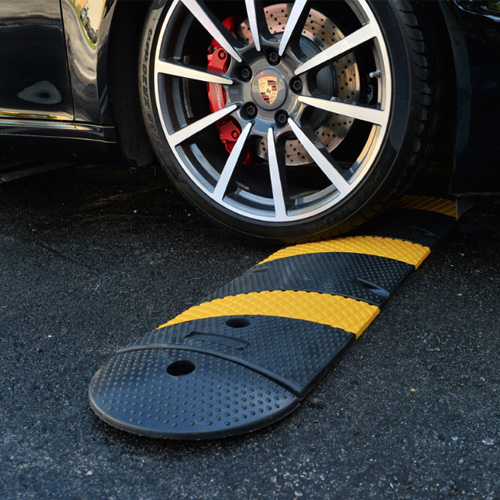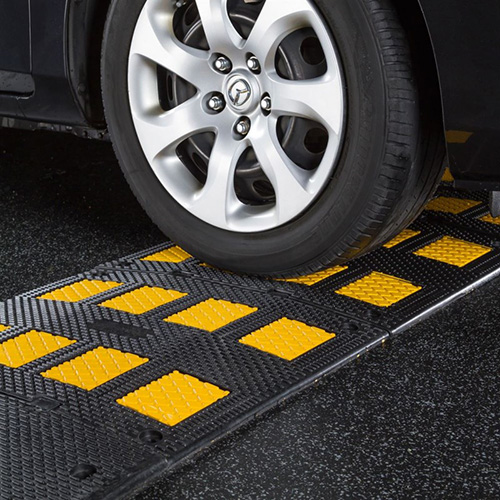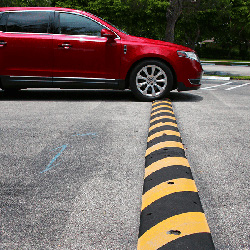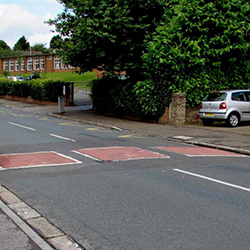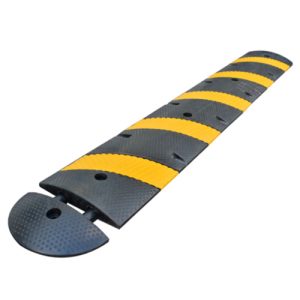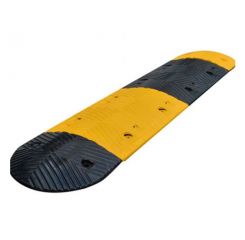Definition of speed bumps and speed humps
Speed bumps and speed humps are traffic calming devices that are used to reduce vehicle speeds in residential areas, parking lots, and other areas where pedestrian safety is a concern. Speed bumps are typically shorter and steeper than speed humps, and are designed to force drivers to slow down significantly. They are often made of asphalt or concrete and are characterized by their sharp, abrupt rise and fall. Speed humps, on the other hand, are longer and more gradual in shape, allowing vehicles to pass over them at a slightly higher speed. They are usually made of rubber or plastic and are designed to provide a gentler reduction in speed. Both speed bumps and speed humps serve the purpose of slowing down vehicles and improving safety, but the choice between the two depends on factors such as traffic volume, desired speed reduction, and the specific needs of the area.
Importance of traffic calming measures
Traffic calming measures play a crucial role in ensuring the safety and well-being of both pedestrians and motorists. One important aspect of traffic calming measures is the use of speed bumps and speed humps. These physical devices are strategically placed on roads to slow down vehicles and reduce the risk of accidents. Speed bumps are typically used in areas where the speed limit is very low, such as residential neighborhoods or school zones. On the other hand, speed humps are designed for areas where a slightly higher speed is allowed, such as commercial areas or parking lots. By implementing the appropriate traffic calming measure, authorities can effectively control the flow of traffic and create a safer environment for everyone. It is essential to understand the differences between speed bumps and speed humps to make the right decision when it comes to implementing these measures.
Purpose of the article
The purpose of this article is to provide guidance on when to use speed bumps versus speed humps, helping readers make the right decision. Speed bumps and speed humps are traffic calming devices designed to reduce vehicle speeds in specific areas. While both serve the same purpose, there are important differences between them that should be considered. By understanding the advantages and disadvantages of each, readers will be able to determine which option is most suitable for their specific needs and circumstances. Whether it’s for a residential neighborhood, a school zone, or a parking lot, this article aims to offer valuable insights and recommendations to ensure the effective implementation of these traffic calming measures.
Differences between Speed Bumps and Speed Humps

Design and shape
When it comes to the design and shape of speed bumps and speed humps, there are certain factors to consider. Speed bumps are typically shorter and wider, creating a more abrupt change in speed for vehicles. They are often used in areas where a significant reduction in speed is required, such as near schools or pedestrian crossings. On the other hand, speed humps are longer and flatter, allowing vehicles to maintain a slightly higher speed while still slowing down. They are commonly used in residential areas or parking lots to encourage drivers to drive at a safe speed. Ultimately, the choice between speed bumps and speed humps depends on the specific needs and goals of the location where they will be installed.
Height and dimensions
When considering the height and dimensions of speed bumps and speed humps, it is important to take into account various factors. Speed bumps are typically higher and have a steeper incline compared to speed humps. They are designed to slow down vehicles significantly and are often used in areas where low speeds are required, such as parking lots or residential areas. On the other hand, speed humps are lower and have a more gradual incline. They are used to encourage drivers to reduce their speed without causing as much discomfort or potential damage to vehicles. The height and dimensions of speed bumps and speed humps should be carefully chosen based on the intended purpose and the desired traffic calming effect.
Installation requirements
When it comes to the installation requirements of speed bumps and speed humps, there are a few key factors to consider. Firstly, the location of the installation plays a crucial role in determining which option is most suitable. Speed bumps are typically used in areas where the speed limit is low and there is a need for a more aggressive traffic calming measure. On the other hand, speed humps are often installed in residential areas or parking lots where a gentler approach to slowing down vehicles is desired. Additionally, the type of road surface and the existing traffic flow should also be taken into account when deciding between speed bumps and speed humps. Overall, careful consideration of these factors will help in making the right decision for the installation of either speed bumps or speed humps.
Advantages of Speed Bumps
Effective in reducing vehicle speed
Speed bumps and speed humps are both effective in reducing vehicle speed. However, they serve different purposes and are suitable for different situations. Speed bumps are typically used in areas where a significant reduction in speed is required, such as near schools or in residential areas. They are higher and more pronounced, forcing drivers to slow down considerably. On the other hand, speed humps are designed to encourage drivers to reduce their speed gradually. They are longer and less steep than speed bumps, allowing vehicles to maintain a slightly higher speed while still promoting safe driving. Ultimately, the decision to use speed bumps or speed humps depends on the specific needs and characteristics of the road or area in question.
Enhanced safety for pedestrians
Enhanced safety for pedestrians is a crucial consideration when deciding between speed bumps and speed humps. Both traffic calming measures aim to reduce vehicle speeds, but they have distinct differences in terms of design and effectiveness. Speed bumps, with their higher vertical profile, are effective in forcing drivers to slow down significantly. They are particularly useful in areas with high pedestrian activity, such as school zones or residential neighborhoods. On the other hand, speed humps are designed to create a smoother ride for vehicles while still encouraging reduced speeds. They are often preferred in areas where maintaining a continuous flow of traffic is important, such as main roads or commercial areas. By carefully evaluating the specific needs of the location and considering factors such as pedestrian safety, traffic flow, and driver compliance, the appropriate choice between speed bumps and speed humps can be made to enhance safety for pedestrians.
Discourages through traffic
Discouraging through traffic is one of the key reasons for implementing speed bumps or speed humps. These traffic calming measures are designed to slow down vehicles and make drivers more cautious while navigating through a specific area. By installing speed bumps or speed humps, the intention is to deter drivers from using a particular road as a shortcut or to discourage excessive speeding. This helps to create a safer environment for pedestrians, cyclists, and residents in the surrounding area. Additionally, by discouraging through traffic, speed bumps or speed humps can also help reduce noise pollution and improve the overall quality of life in a neighborhood.
Disadvantages of Speed Bumps

Discomfort for drivers
Discomfort for drivers is an important factor to consider when deciding between speed bumps and speed humps. Speed bumps are designed to create a more abrupt change in speed, causing a higher level of discomfort for drivers. This can be effective in slowing down vehicles in areas where speed reduction is crucial, such as school zones or residential neighborhoods. On the other hand, speed humps are designed to provide a gentler and smoother transition, reducing the discomfort experienced by drivers. They are often used in areas where a moderate decrease in speed is desired, such as parking lots or industrial areas. Ultimately, the choice between speed bumps and speed humps should be based on the specific needs and priorities of the location, taking into account the level of discomfort drivers are willing to tolerate for the sake of safety and speed control.
Potential damage to vehicles
When considering the use of speed bumps or speed humps, it is important to take into account the potential damage they may cause to vehicles. Speed bumps, with their sharper incline and steeper profile, can sometimes lead to more significant impacts and potential damage to the undercarriage of vehicles. On the other hand, speed humps, with their gradual incline and wider surface area, are designed to minimize the risk of damage to vehicles while still effectively reducing speed. Therefore, when making the decision between speed bumps and speed humps, it is crucial to weigh the potential damage to vehicles and choose the option that best balances traffic calming with vehicle safety.
Increased noise pollution
Increased noise pollution is a significant concern when deciding between speed bumps and speed humps. Speed bumps, with their sharper and higher profile, tend to create more noise as vehicles pass over them. This can be particularly problematic in residential areas where noise pollution can disrupt the peace and tranquility of the neighborhood. On the other hand, speed humps, with their gradual incline and longer length, are designed to minimize noise and create a smoother driving experience. By choosing speed humps over speed bumps, communities can effectively reduce noise pollution and create a more harmonious living environment.
Advantages of Speed Humps

Gentler on vehicles
Speed humps and speed bumps are two common traffic calming measures used to slow down vehicles in residential areas and parking lots. While both serve the same purpose, there are some key differences between them. One major difference is that speed humps are designed to be gentler on vehicles compared to speed bumps. Speed humps are wider and have a more gradual slope, allowing vehicles to pass over them at a higher speed without causing significant discomfort or damage. This makes speed humps a preferred choice in areas where traffic needs to be slowed down without causing excessive wear and tear on vehicles.
Less discomfort for drivers
When it comes to providing a smoother ride for drivers, speed humps are often a better choice than speed bumps. While both traffic calming measures serve the purpose of reducing vehicle speeds, speed humps are designed to be less jarring and uncomfortable for drivers. Speed bumps are typically higher and have sharper angles, which can cause more discomfort and potential damage to vehicles. On the other hand, speed humps have a more gradual incline and a longer length, allowing drivers to navigate over them more smoothly. By opting for speed humps instead of speed bumps, communities can prioritize the comfort and safety of drivers while still effectively controlling speed.
Can be used on higher speed roads
Speed bumps are typically used on lower speed roads, where the speed limit is usually below 20 mph. However, in certain cases, they can also be used on higher speed roads. When used on higher speed roads, speed bumps are usually longer and have a gentler slope to ensure smoother vehicle passage. They are strategically placed to slow down vehicles and improve safety in areas where excessive speed is a concern. By implementing speed bumps on higher speed roads, authorities can effectively manage speed and reduce the risk of accidents.
Disadvantages of Speed Humps
Less effective in reducing speed
Speed bumps are generally less effective in reducing speed compared to speed humps. While both types of traffic calming devices are designed to slow down vehicles, speed bumps create a more abrupt and jarring experience for drivers. This can lead to discomfort and potential damage to vehicles if not approached at the appropriate speed. On the other hand, speed humps are designed to have a gentler slope, allowing vehicles to maintain a slightly higher speed while still encouraging a reduction in speed. This makes speed humps a preferred choice in areas where a smoother traffic flow is desired while still promoting safer driving speeds.
May not deter through traffic
Speed bumps and speed humps are effective in slowing down traffic in residential areas and other locations where traffic calming is necessary. However, it is important to note that they may not be effective in deterring through traffic. While speed bumps and humps can reduce the speed of vehicles, determined drivers may still choose to drive over them quickly to maintain their speed. In such cases, other traffic calming measures, such as road narrowing or traffic circles, may be more suitable to discourage through traffic.
Limited visibility at night
Limited visibility at night is a crucial factor to consider when deciding between speed bumps and speed humps. Speed bumps, with their higher profile and sharper angles, are more effective in catching the attention of drivers and slowing them down in low light conditions. On the other hand, speed humps, with their gradual incline and longer length, may not be as visible at night, potentially leading to a higher risk of accidents. Therefore, it is important to carefully assess the visibility conditions at night before making a decision on whether to install speed bumps or speed humps.

